Ugreen DXP8800 Plus network attached storage review: Good hardware, beta software
Accessory manufacturer Ugreen is shifting into a new product category, and has launched a wide range of network attached storage devices with an excellent price-to-performance ratio. Unfortunately the line ships with software that is too immature to unconditionally recommend today.
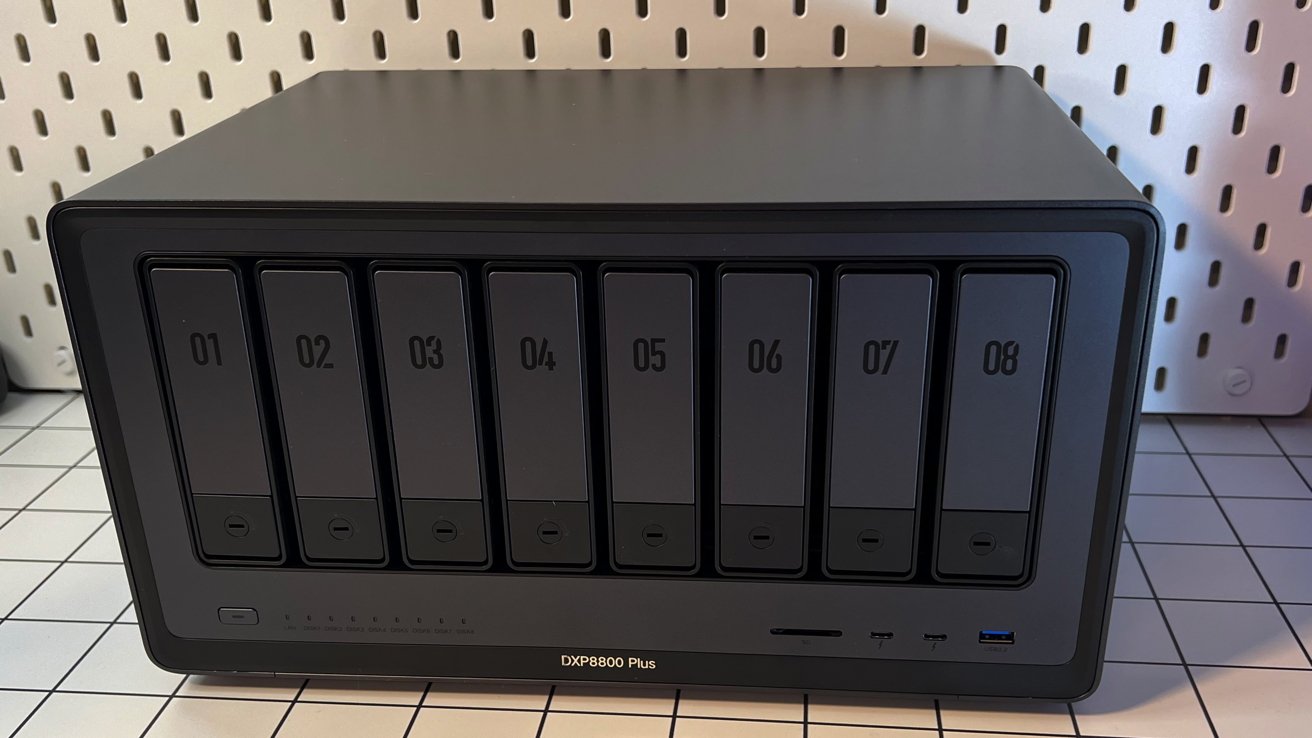
Ugreen DXP8800 Plus review: Mature hardware, infant software
The Ugreen NASync range consists of storage appliances for consumer and professional use, ranging from a two-bay device up to an 8-bay version. It also offers a four-bay edition aimed at media professionals, one that uses M.2 NVMe drives for high speeds.
For this review, Ugreen supplied us with the DXP8800 Plus, the eight-bay model intended to offer high capacities of storage for business and power users.
As its first foray into the NAS field, it would also be expected that Ugreen would stick to a fairly simple arrangement, namely an entry-level offering a base level of features and few frills. Instead, Ugreen is attempting to swing for the fences with its initial attempt.
The pitch was right down the middle, the swing was clean, and the ball was smashed deep to center field -- but it hasn't cleared the wall yet.
Ugreen DXP8800 Plus 8-bay NAS review - Design
The DXP8800 Plus is a fairly typical-looking NAS clad in an aluminum enclosure, and is as large as you'd expect a device that holds eight hard drives to be.
Drive caddies are lockable, with individual mechanisms for each one at the front, below an identifying number. Below and to the left are a row of nine indicator lights for drive activity and the network connection, as well as the main power button.
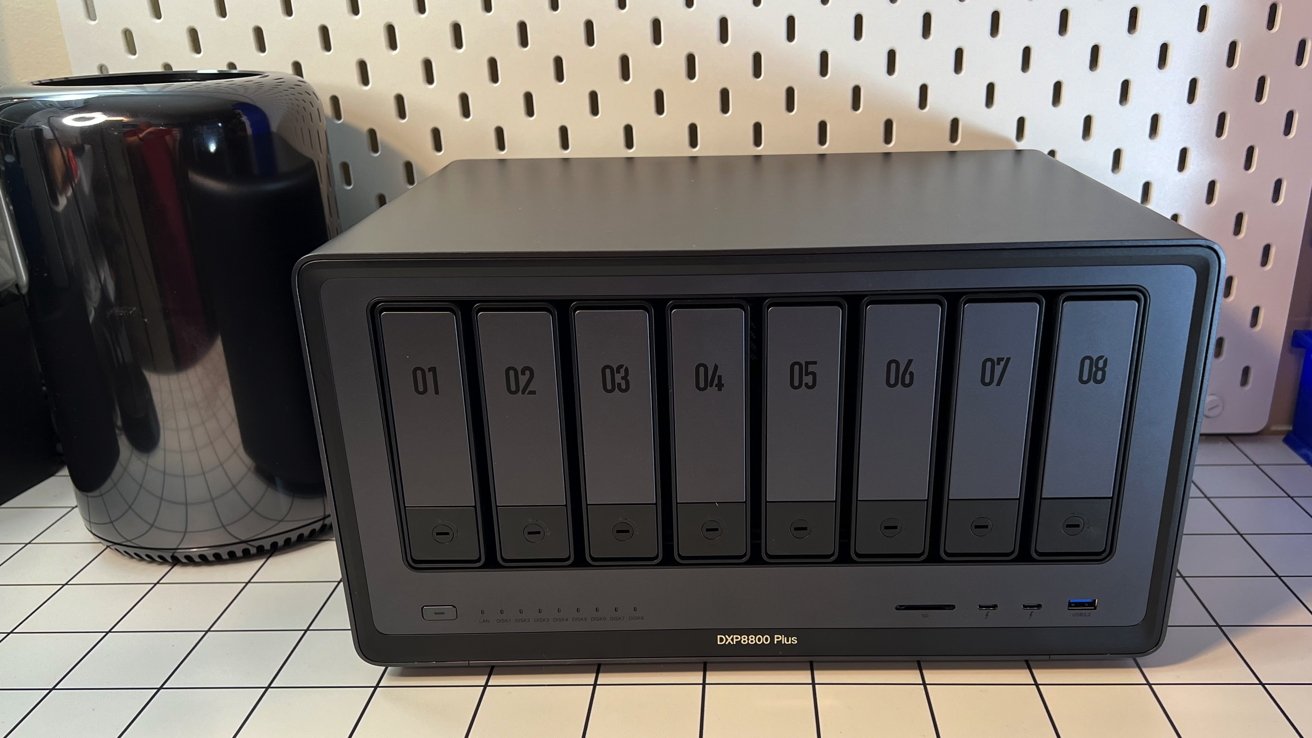
Ugreen DXP8800 Plus review: Mac Pro for scale
To help with media ingesting and access, there are also two Thunderbolt 4 ports, as well as an SD 4.0 card reader, and a USB 3.2 Gen 2 connection that works at up to 10Gbps.
These ports do not provide Drobo-like features, though. You can't use them to directly connect to a computer to use the hardware as direct storage. They're only for the expansion of the NAS with conventional enclosures.
At the rear is a large magnetic dust cover, complete with Ugreen branding in the middle. There is a second USB 3.2 connection, as well as two USB 2.0 ports capable of 480Mb/s, HDMI, a Kensington lock slot, and a pair of 10gig Ethernet connections that can be aggregated to 20 Gbps on a properly configured and outfitted network.
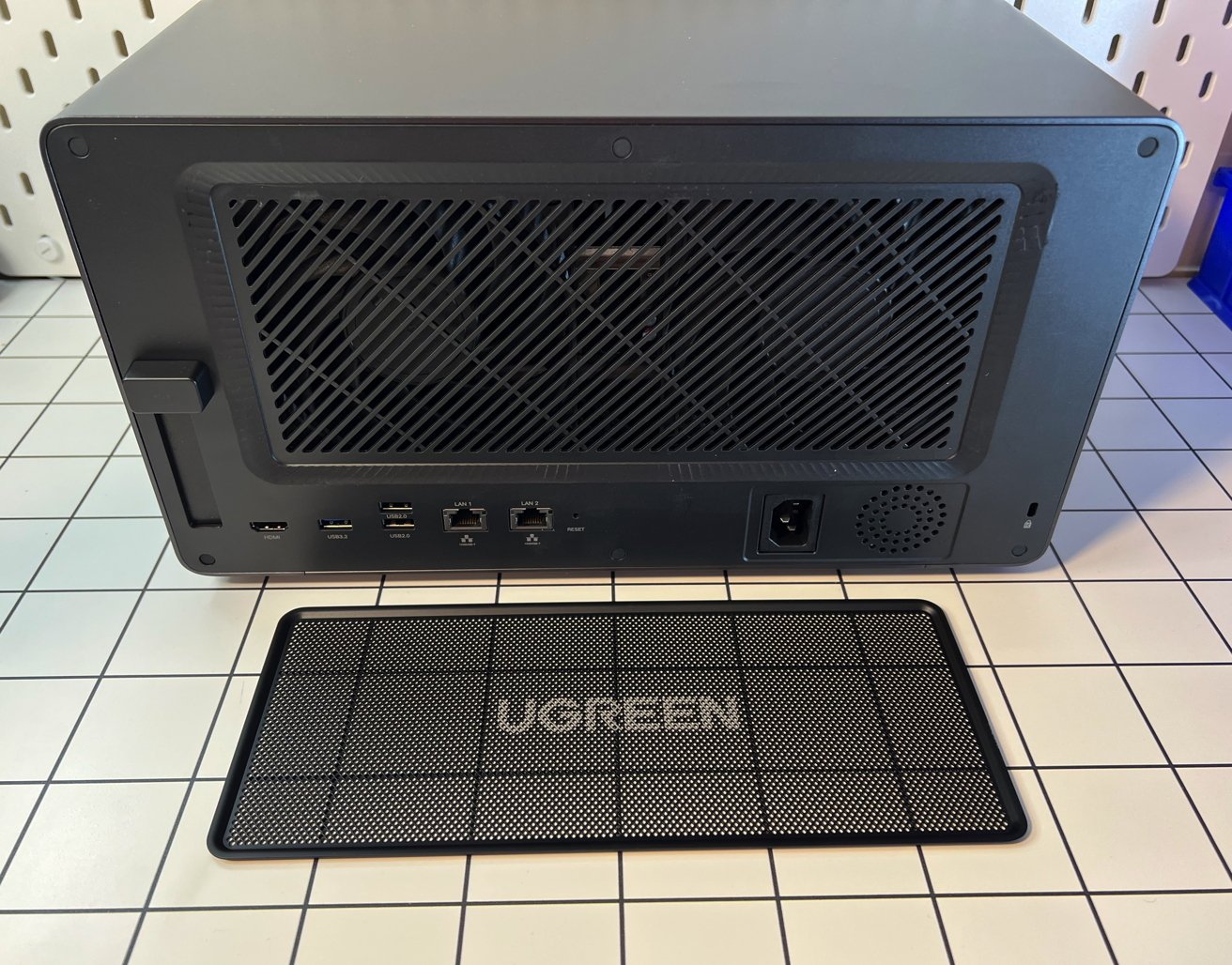
Ugreen DXP8800 Plus review: Rear, with ports and removable magnetic dust cover
This last point is especially useful for business-based networks, since you would expect to take advantage of a high-speed network infrastructure to provide file access to multiple users. It is certainly overkill for home users today, but some of the other lower-capacity models include 2.5 Gig ports as well.
Also around the back of the enclosure is a PCI-E 4.0 x4 slot, giving more expansion options.
Underneath the unit is an expansion door that can be unscrewed. In the compartment are two RAM slots, and two M.2 drive slots.
When running and under load, the unit hits about 49 decibels at a meter away from the unit, which is mostly drive chatter and fan whine. This isn't too bad, and considering that most network attached storage devices aren't on your desk, isn't an issue at all.
Ugreen DXP8800 Plus 8-bay NAS review - Drives and Processing
Installing the drives into the individual drive trays is straightforward, and no tools are required. After sliding the tray out, a section to one side of the tray can be pulled out so a drive can be placed, then pushed back in to pin it inside the tray. There are also screw holes for 2.5-inch drives, like SSDs.
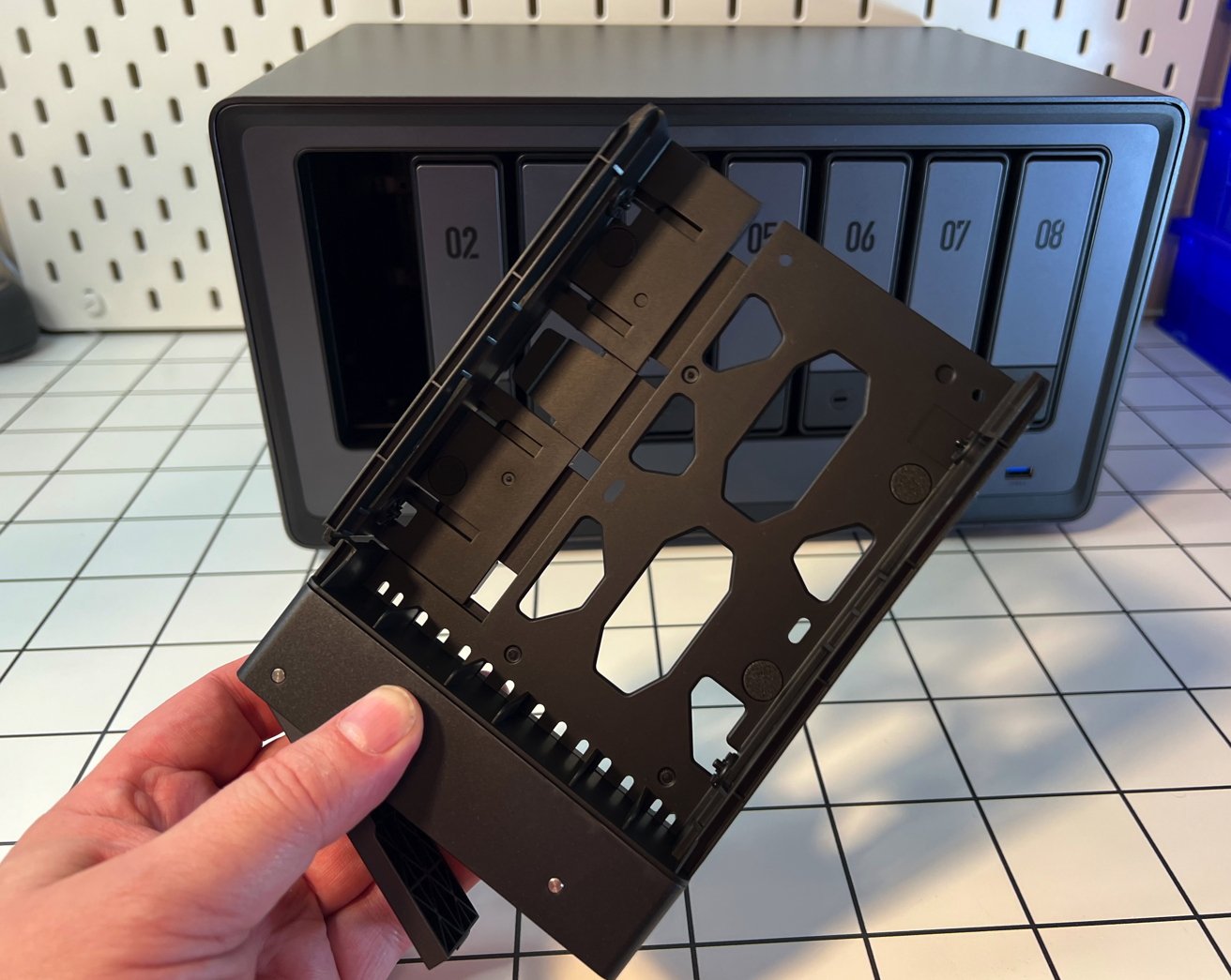
Ugreen DXP8800 Plus review: How the drive tray can take drives, without screws or tools
With eight main drive bays to take 3.5-inch hard drives, the DXP8800 Plus has the highest potential capacity in the range, simply because of the drive count. Able to accept up to eight 22-terabyte drives, it can have up to 176 terabytes of spinning platters installed at a time.
However, Ugreen says the maximum capacity of the DXP8800 Plus is actually 184 terabytes. This includes the two M.2 SSD drive slots, which can each take a 4-terabyte drive.
These M.2 drives could be used as extra storage, but it's also possible to use the drives for caching, potentially allowing users to enjoy even faster transfer speeds than dealing with spinning metal alone.
Another positive point for the DXP8800 Plus is processing grunt. Packing a 12th-gen Intel Core i5-1235u processor with two 4.4GHz performance cores and eight 3.3GHz efficiency cores as well as 12 threads, the NAS boasts multitasking capabilities and hardware decoding of video.
Assisting the processor is 8GB of 4,800MHz DDR5 memory, which again helps with speed. However, users can upgrade the memory manually, with a maximum supported RAM capacity of 64 gigabytes. The processor also allows for PCI-E 4 support, for the expansion slot on the device.
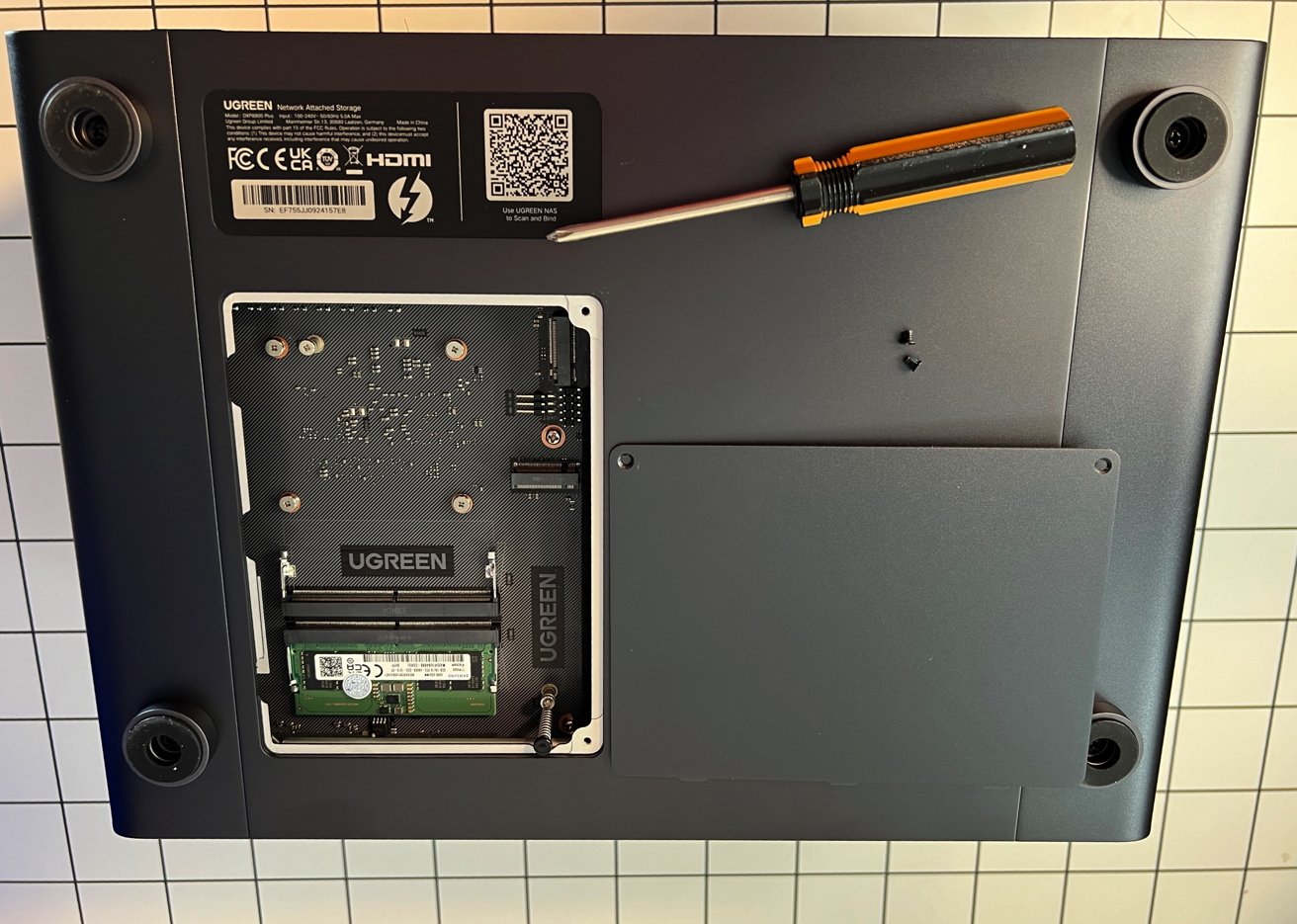
Ugreen DXP8800 Plus review: Door underneath unit providing M.2 and RAM slots
That processor is sufficiently beefy to do many things at once that the device just can't do right now. More on that in a bit, though.
While users can keep the NAS running under JBOD, it also includes support for various RAID configurations. The DPX8800 Plus can handle RAID 0, 1, 5, 6, and 10, giving a wide selection of capacity, speed, and redundancy options.
This is all fine and good, but network attached storage devices often host a mish-mash of drive sizes. As provided, the UGOS Pro operating system can't deal with that kind of configuration in RAID, and demands all drives to be the same size.
This will probably change with time, but as of April 2024, the functionality doesn't exist.
Ugreen DXP8800 Plus 8-bay NAS review - Setup and interface
After installing the drives, the setup process of the DPX8800 Plus is fairly straightforward. After downloading and installing client software, an option to search the network for the NAS is presented, followed by a registration process, and then the creation of a local management account.
This registration is required to use external network features, such as SMS notifications and allowing remote access via the companion mobile app.
The desktop and mobile apps allow users to stream movies stored on the NAS, view photographs, and to manage and transfer files. To keep the files secure, the software includes SHA256 encryption and uses SSL/TLS for transfers.
A built-in Security manager also offers real-time protection features and can be used to schedule virus scans on the data.
As of April 2024, all told, the operating system is passable. It works, and delivers what you'd expect for speed across a 10 gigabit wired network -- but it lacks features that other devices have.
For example, there's no two-factor authentication and no whole-volume encryption. We're expecting improvements over time, but can't give them credit for that right now. Obviously, longer-term occupants of the NAS space have more mature software.
And, many apps available to other NAS ecosystems aren't available. To date, there's limited virtual machine support, and no way to natively install Plex or a BitTorrent client outside of a container.
For more advanced users, Docker was added in the last days of this review. It allows for those apps to be installed from other sources, opening up the utility of the device greatly.
Prior to that Docker debut, this review was a bit harsher. It doesn't change the fact that most NAS users prefer native apps to Docker containers, though.
For a more niche set of users, there is no iSCSI support at all, and there doesn't appear to be a short-term path for it to get added.
As far as alternative operating systems go, there's a documented process for it, and we fooled around with TrueNAS for a while. UGreen originally said that you'll lose all hardware warranties if you do so, but comments in the Kickstarter threads have lightened up on that in recent days.
Overall, these are large omissions. We can't review products based on features that don't exist. This is a problem for the target audience -- but hopefully a short-term one.
Ugreen DXP8800 Plus 8-bay NAS review - Media and photos
The beefy Intel processor will be excellent at typical transcoding and media streaming functionality, at some point. This will be useful if you have a collection of movies you want to watch. While you can stream them over the local network, the included HDMI port provides a more direct connection without network access, and with 8K video support too -- but the existing HDMI replay interface is rickety.
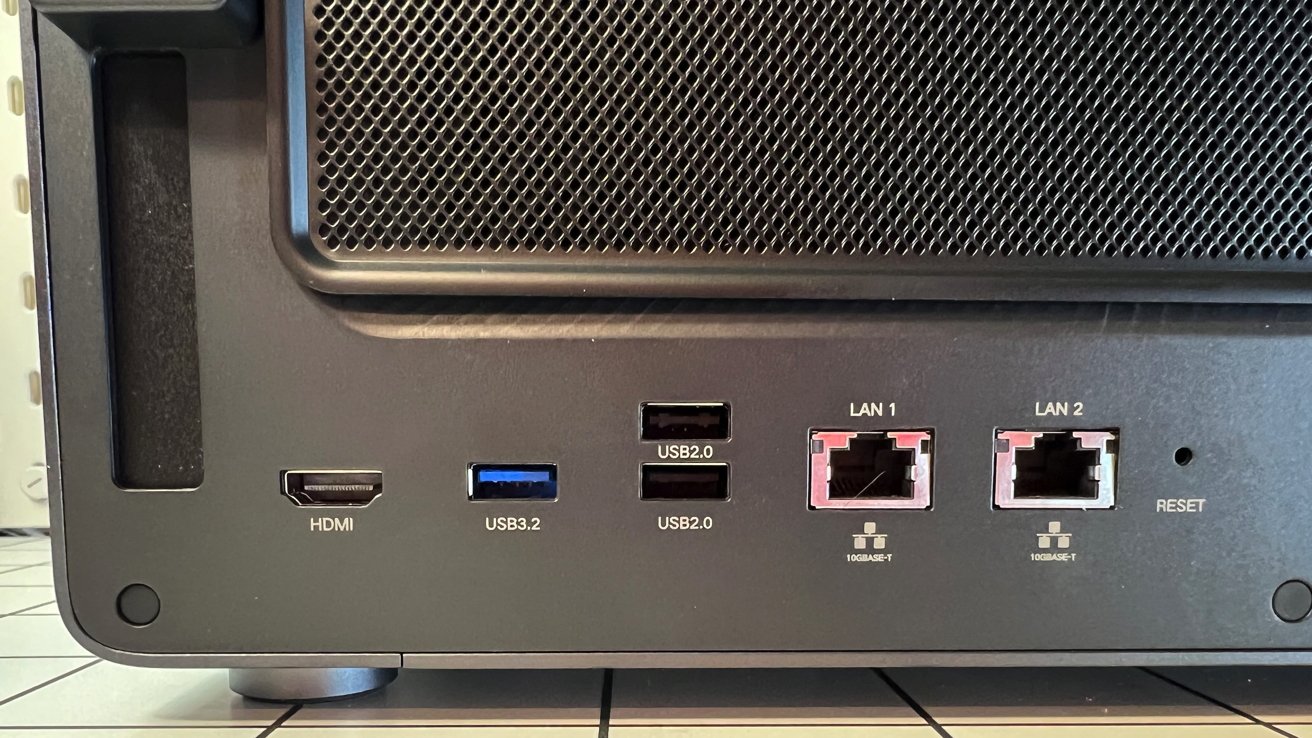
Ugreen DXP8800 Plus review: Rear ports, with HDMI
That processing and memory speed also helps another bit of smart technology used in the device. The NAS includes picture recognition and classification, meaning it can analyze and recognize the content of photos stored on its drives.
For end users, this could mean an end to browsing entire collections in the search for the right photo, simply by searching for batches of photos using a text prompt. Existing Photos users on macOS and iOS will be familiar with how useful this can be, especially for larger data collections.
Ugreen DXP8800 Plus 8-bay NAS review - A great first effort
A company's first attempt to introduce a product in a new category can take that swing for the fences and miss, as designers and engineers get their grips on the hardware.
There's some of that on display here. The hardware is good, but the software is lacking right now. We'll see how that shakes out over time.
In the DXP8800 Plus, Ugreen demonstrates a NAS that can easily be used in a business environment or an extremely demanding home network. Add in things like the automated picture recognition system, 8K video support, and the vast storage capacity, and it's an extremely capable piece of hardware.
It's just not extremely capable in software as of mid-April 2024. In fact, it's still in beta.
I like the hardware a great deal. But, given the immaturity of the software, it's not going to replace my Synology yet. We'll try again in about six months.
Ugreen DXP8800 Plus 8-bay NAS review - Pros
- Excellent price to performance
- Powerful hardware for the price
- PCI-E, SSD, and RAM expansion is easy
- Pretty slick drive trays, but...
Ugreen DXP8800 Plus 8-bay NAS review - Cons
- Those trays would have been way better if they were metal
- The Ugreen NAS operating system is still in a pretty early beta as of April 2024
- Hybrid RAID not supported right now
- Extremely limited native app support today
- No iSCSI support
Rating: 3 out of 5
We can't rate products on promised future features. The UGreen DXP8800 Plus has excellent hardware, but other network attached storage devices have more mature software.
We didn't experience any data loss in the month we've been hammering on the unit, but we're wary of any beta anywhere having access to crucial files, and the ability to destroy them if things go badly.
We do want to stress, however, that one network attached storage device being used for working is in no way a backup solution. Make sure that if you get any network attached storage device from any vendor, that you have "cold" storage off-site for your vital files too.
Anyway, if all you're ever going to need is network storage, you're probably good to go with the Ugreen NAS lineup at some point in 2024 -- just not today unless you want to put the hardware on the shelf and wait for OS updates. We'll be revisiting this later in the year, as the operating system matures.
Where to buy the Ugreen DXP8800 Plus 8-bay NAS
For now, the Ugreen DXP8800 and the rest of the cohort is being crowd-funded on Kickstarter. The company is well-established, the project is significantly over-funded, and we're not that concerned about the hardware delivery.
That said, any crowd-funded project entails risk.
As reviewed, and as of mid-April, the DXP8800 Plus has a price of $974, with an expected retail price of $1499. For comparison, the eight-bay Synology DS1823sx+ retails for $1800.
Other units are available in the Kickstarter, with an assortment of choices for number of bays and processors. Shipments are expected in June 2024.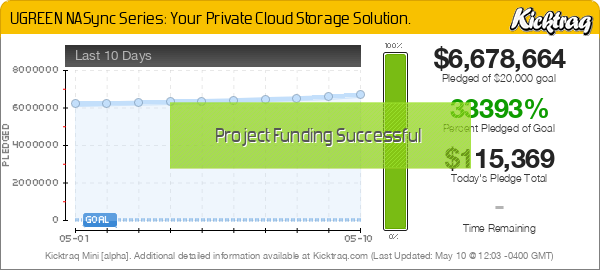
Read on AppleInsider

Comments
(I also have two OWC 4M-2 RAID boxes running a total of eight NVME SSDs directly attached to my Mac Studio via Thunderbolt 3. The faster set of SSDs is only twice as fast as my connection over the 10GBe network. (And the NAS shares its network connection from the WIFI 7 router via 10GBe so I have pretty fast access to everything on my network. Faster than any wireless network I've tried before. At least with my 6e devices on the 6GHz network.)
I run a couple of Synology 1621+ NASes, one a backup of the other. I've come close to losing data when some older Drobo boxes went bad on me. Having a backup is what saved me.
Also, remember - RAID is not the same as having a good backup.
I've actually pre-ordered the NVME enclosure they've announced but if the same issue is true for that I need to re-think things...
What are people doing for fast (Thunderbolt-3) NVME RAID enclosures these days? I'd like to get 4 4TB sticks and RAID5 them into a 12TB external DAS disk... Looking for advice!
Yup, cannot agree more.
In fact, I agree so strongly, that point has been in the review from the jump!